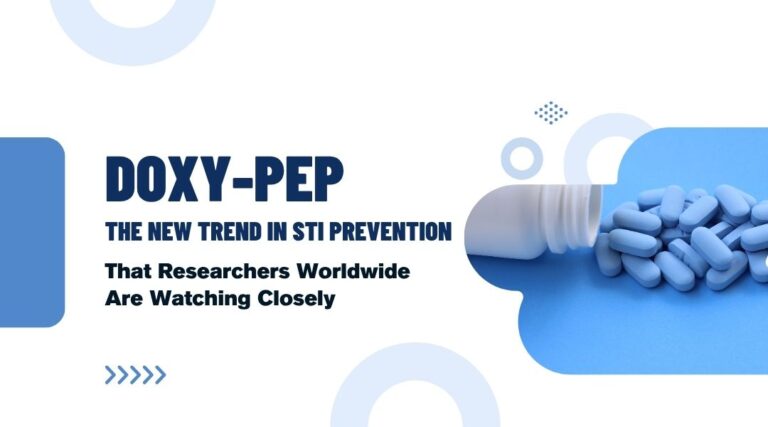Gender diversity has become increasingly recognized around the world, yet individuals of diverse genders continue to face barriers within healthcare systems. Misgendering, inappropriate questions, and prejudice—especially surrounding HIV—remain challenges that prevent many from accessing the care they need.
With global movements pushing for equity, 2025 marks a significant shift. Countries, clinics, community organizations, and public health institutions are placing stronger emphasis on ensuring that healthcare is a fundamental right for all people, regardless of gender identity. This includes making HIV services—testing, prevention, and treatment—safer, more accessible, and free from stigma.
Gender Diversity in Modern Healthcare
Today, gender is understood as a spectrum, encompassing transgender women and men, non-binary individuals, gender-fluid identities, and intersex people. This understanding is supported by modern science, psychology, and lived experiences.
Yet many healthcare systems still operate on binary assumptions. Registration forms often provide only “male” or “female” options, electronic records may not respect a person’s chosen name, and medical staff may unintentionally misgender patients. Though these issues may seem small, they have a significant impact on how safe and respected individuals feel within healthcare environments.
Why Equal Healthcare Access Matters
Equal access is not simply a matter of inclusivity—it is a matter of survival and dignity. When gender-diverse individuals feel unsafe, judged, or misunderstood, they often avoid healthcare altogether. This is particularly worrying for HIV prevention and treatment, where timely access is essential.
Equal healthcare access means:
- Receiving care without judgment
- Accessing accurate HIV information and support
- Feeling comfortable requesting HIV testing
- Getting PrEP or PEP without invasive or inappropriate questioning
- Having one’s name, pronouns, and gender identity respected
These elements ensure that healthcare becomes a safe place instead of a source of anxiety.
Barriers to HIV Services for Gender-Diverse Communities
Despite improvements, many challenges continue to limit access to HIV services for gender-diverse individuals. Fear of being judged or questioned about personal behaviors is common, even though HIV testing should be normalized for everyone.
Common barriers include:
- Lack of provider training on gender identity
- Forms and administrative systems that only support binary genders
- Stigma toward HIV or certain sexual behaviors
- Inadequate or biased communication about PrEP/PEP
- Fear of being asked intrusive or discriminatory questions
These obstacles discourage many from seeking essential care, increasing the risk of late diagnoses or inconsistent treatment.
Common Barriers in Healthcare for Gender-Diverse Individuals
| Barrier Type | Real-World Example | Impact on Access |
|---|---|---|
| Systemic structure | Forms with only male/female options | Feeling unsafe; avoiding services |
| Provider behavior | Misgendering or inappropriate questioning | Shame; unwillingness to return |
| Social stigma | Judgment around HIV or sexual behavior | Fear of testing or seeking care |
| Communication issues | Limited or biased information about PrEP/PEP | Reduced access to effective prevention |
What Inclusive Healthcare Should Look Like
A truly inclusive healthcare system begins with creating safe, judgment-free environments. Gender-diverse individuals should feel comfortable accessing HIV services—testing, PrEP, PEP, treatment—without fear or discomfort.
Inclusive care involves:
- Using respectful and appropriate language
- Explaining HIV prevention (PrEP/PEP) in neutral, accessible terms
- Providing clear information about U=U (Undetectable = Untransmittable)
- Respecting chosen names and pronouns in all medical records
- Ensuring privacy and confidentiality during HIV treatment or ARV refill visits
Gender Diversity When healthcare environments validate identity and respect autonomy, patients are far more likely to return for follow-up care.
A Year of Policy Shifts and HIV Awareness

Many countries are implementing new health policies to expand access to HIV services for gender-diverse communities. These include free or low-cost HIV testing, decentralized PrEP programs, long-acting injectable PrEP, and simplified ARV refill procedures. Telehealth services are also becoming more common, supporting private and consistent care for those who may fear in-person visits.
Importantly, the U=U message has become widely recognized in 2025, helping reduce stigma and encouraging more people living with HIV to maintain treatment. As knowledge spreads, the public increasingly understands that someone living with HIV can live a normal, healthy life without fear of transmitting the virus once undetectable.
This shift is transforming not only medical access but also societal perceptions.
The Future: A Healthcare System for All Genders and All HIV Statuses
The future of healthcare is leaning toward personalized, identity-affirming services. This includes updating forms, redesigning clinic environments, training providers, and using digital technologies to increase access.
Self-testing kits, telemedicine consultations, long-acting PrEP injections, and discreet digital follow-ups are making HIV services easier, more private, and more accessible than ever before.
As systems evolve, HIV services will feel less like “special care” and more like standard healthcare—something everyone can access without fear or shame.
Gender diversity is a natural part of humanity, and HIV status should never be a barrier to care. In 2025, we are witnessing a crucial shift toward healthcare systems that value dignity, safety, and equality for all.
Inclusive healthcare isn’t only about medicine—it’s about respecting human life. When everyone, regardless of gender or HIV status, can walk into a clinic confidently, society moves closer to true equality.










